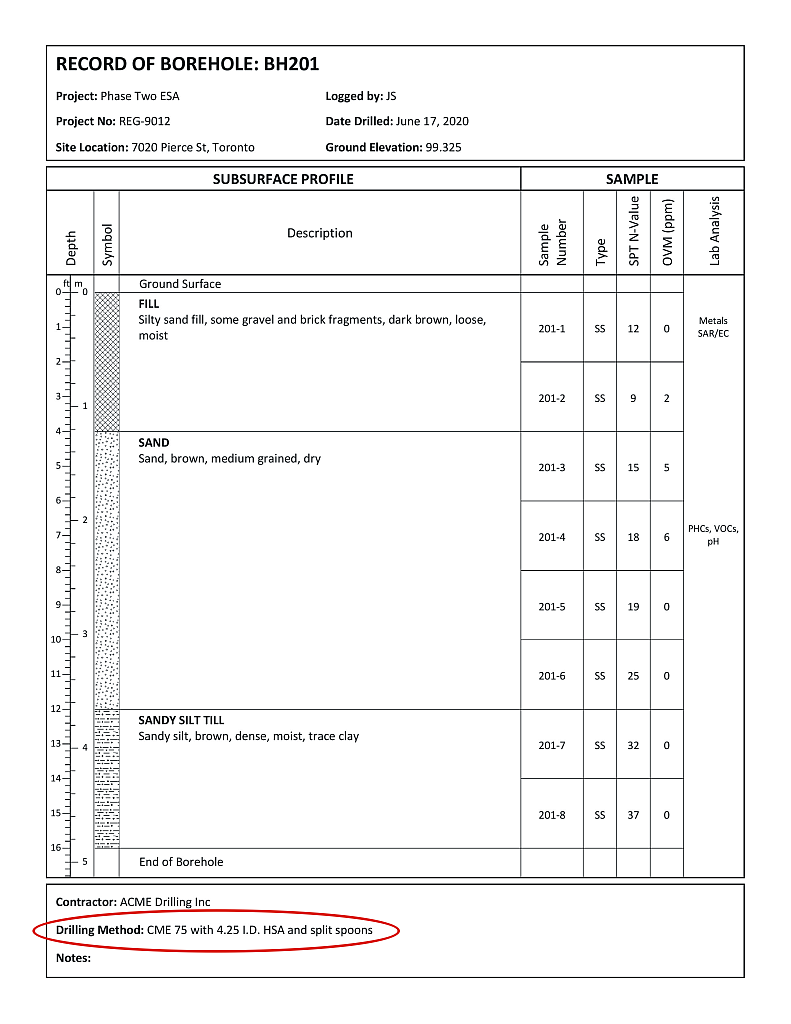We commonly receive inquiries about drilling feasibility accompanied by borehole logs from a previous drilling program, often done by a different consultant. This can be very helpful for us to evaluate the site conditions to help brainstorm an approach for the project. However, far too often, borehole logs lack information on the drilling method used. Perhaps that information was in the text of the report, but we are usually only provided the logs.
If a basement drilling project was completed with a Pionjar and consistently had refusal at 6ft, there is no point in us going to the site to use the same method if you know that you must get to 12ft. Knowing that it was a Pionjar method tells us we must consider using a more powerful drill, such as a GeoTool or Big Beaver. Similarly, if a CME 75 could not auger through the weathered shale encountered, there is no point in us trying to use direct push with a GeoProbe 6620.

Borehole logs are often passed around many different stakeholders. A good practice when completing your logs to assist future readers is to provide the name of the drilling contractor and ensure you indicate the following:
I. The type of drill (i.e., CME 75, GeoProbe 7822, MiniMole, Pionjar, etc.)
II. The tooling method (i.e., solid stem augers, hollow stem augers, wash boring)
III. The sampler type (i.e., direct push, split spoon, continuous sampler)
Click here to download a pdf version of a borehole log example. 
